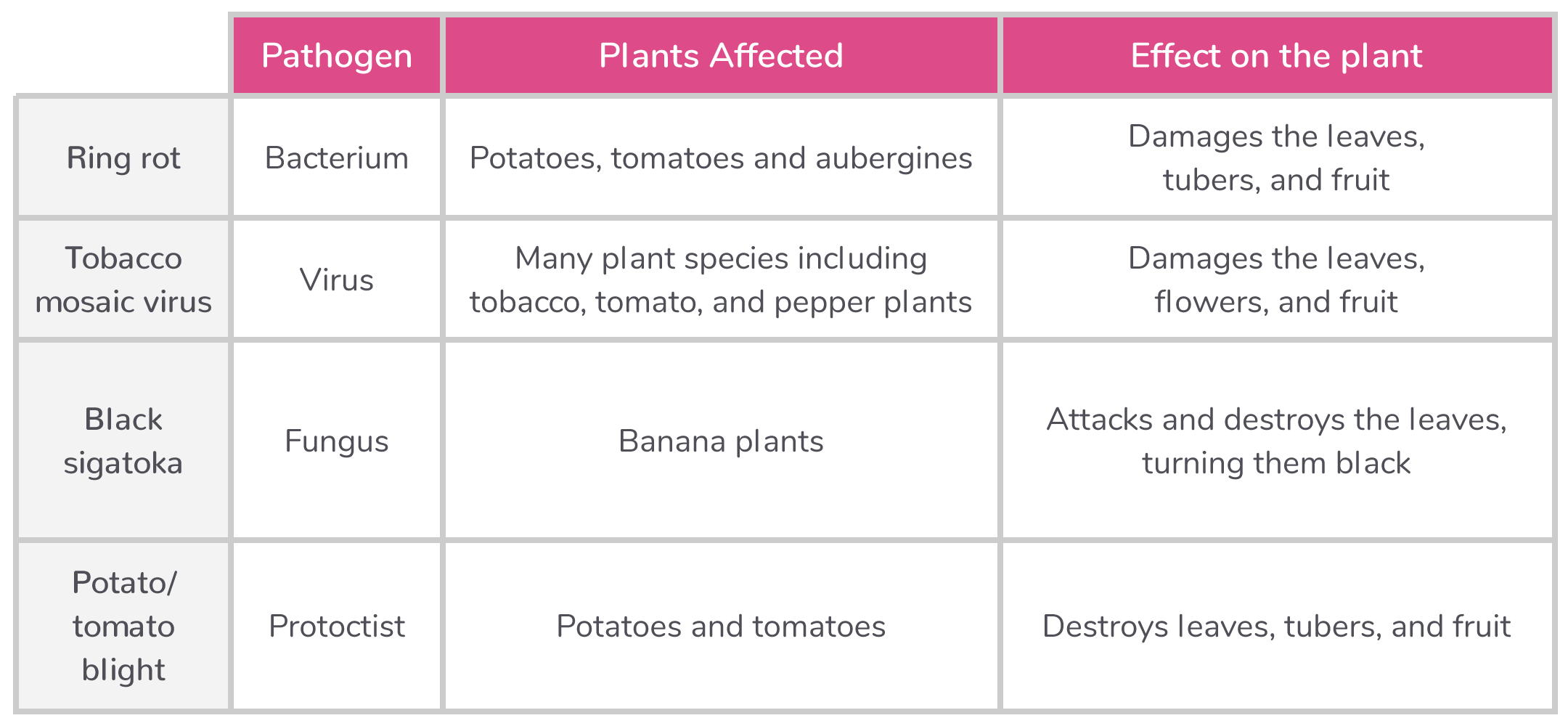Plant Diseases and Defences
This lesson covers:
- How diseases are transmitted between plants
- Examples of plant diseases
- How plants defend themselves against pathogens
Modes of transmission Like in animals, communicable diseases can be passed from one plant to another. This can occur via direct or indirect transmission:
Examples of vectors include:
|
The risk of communicable disease is increased by certain factors
|
Examples of plant diseases You need to be able to describe the pathogen and effect of the following plant diseases:  |
Plant defences Plants have a number of physical and chemical defences mechanisms to protect themselves from pathogens. Physical defences include:
Chemical defences involve the production of chemicals including:
|